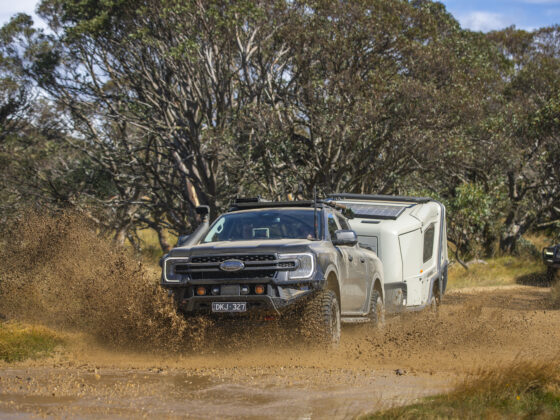It’s a pretty audacious task: pitting a bunch of brand-new, unmodified vehicles against probably the most gruelling off-road track in Australia, and one of the toughest in the world: the Canning Stock Route.
Along with the massive challenge that comes with planning and organising such a run into remote country, your 4X4 is going to be put under a lot of strain. You’re going to be fully loaded up with food, spares, water and other gear for the 1,900-kilometre challenge.
Then, add on top of that some hellish corrugations, and you have a serious challenge for any 4WD, let alone a stocker. Here’s a great video of the journey by Edmunds, which is well worth a watch.
Corrugations will find a weakness in any vehicle: any loose bolt, thin metal or mounting point will get put through it’s paces mercilessly. Shock absorbers on these vehicles were not only wearing out, but actually breaking in half during the journey. Spare wheel mounts and aircon units were also going belly-up, pretty common for this kind of torturous driving.
But otherwise, the gang of Mercedes completed the journey. They had to get some shocks flown in because they didn’t have any spares, but if they were carrying spares, or adjusted their driving style to keep the shocks alive, they might have made it through unscathed.

I say good work to Mercedes for taking on the infamous Canning Stock Route. It shows how much faith they have in their product to even think about attempting such a trip. I don’t see any other manufacturers putting their own 4WDs up to such a test in front of the public eye.
You’ll notice they reference on G-Wagon that had no troubles, and that’s the G-Professional. It’s a 4WDer’s type of Mercedes, built up to the standard that the Australian Army prefers for toughness and reliability. The suspension setup in no-doubt different, and some off-road oriented rubber means it smashed the Canning without a worry. Pretty impressive stuff.
How to defeat corrugations
Check your suspension: Unless you drive a Unimog, your OEM suspension is probably not up to the task of relentless, endless corrugations with a full load on-board. And lower-quality aftermarket gear probably isn’t the solution here, either. Any can break, however. So carry spares, and know how to fit them.
Check your speed: If your shocks are starting to soften up, slow down. It’s pretty simple, but damned effective. Slowing down will allow your shocks to dissapate some of the heat they have built up. If slowing down doesn’t help, stop. Rip out the billy and have a cuppa, and let your shocks cool down a bit.
Check your tyre pressures: If you’re tyres are too inlflated, your’e effectively tying on arm of your suspension behind it’s back before stepping in the ring. Hard tyres means the suspension is the meat in the sandwhich, getting battered in between the movements of the wheel and the weight of the vehicle. Air down a bit, which will let the tyre sidewalls flex and absorb some of the movement. Doing this will put extra strain and heat into your rubber, so don’t go too low with the pressures. Light-truck tyres with thicker sidewalls do a much better job at handling this stuff, and you should also be very wary of depending upon old or worn out tyres. If your rubber is a bit long in the tooth, replace it before a big trip.
What are your best tips for remote, long distance Outback travel?












